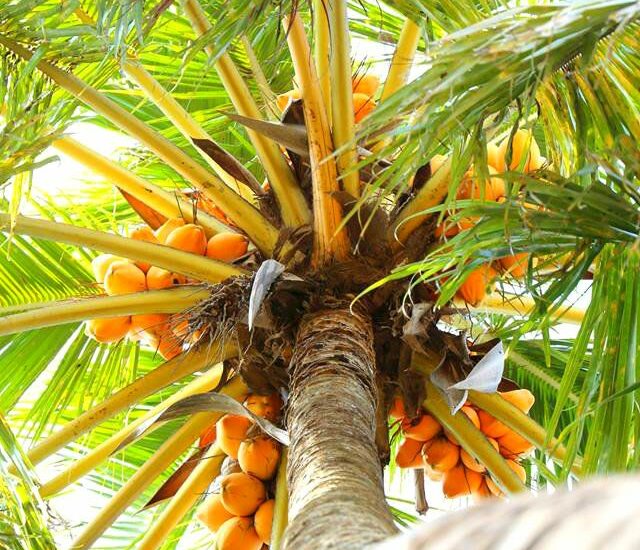- August 22, 2023
- Posted by: Web Admin
- Categories:

Habitat and Distribution: King coconut palms are endemic to Southeast Asia’s coastal regions, mainly Sri Lanka and parts of southern India. They grow in sandy soils at the water’s edge, where their roots have access to both saltwater and freshwater. This modification enables them to cope with the stresses of salt spray and severe winds in coastal areas.
Coastal Erosion and Soil Stabilization: King Coconut trees provide an ecological role in soil stability and coastal erosion prevention. The large root systems of these trees help to bind the sandy soils together, lessening the impact of wind and water erosion. This stability is critical for safeguarding coastal habitats, such as beaches and dunes, from erosion and sea-level rise.
Biodiversity Support: The habitat surrounding king coconut palms is remarkably varied, with many different species relying on these plants for nourishment and shelter. Sunbirds and several parrot species are drawn to the nectar-rich flowers and suitable nesting locations among the palm branches. Insects and tiny mammals seek safety amid the leaves and in the cracks in the bark.
Nutrient Cycling and Soil Enrichment: King Coconut trees’ fallen leaves and fruit contribute to nutrient cycling within their habitat. As these organic materials degrade, they release vital nutrients into the soil, boosting the growth of nearby plants. This cycle of organic matter breakdown and release of nutrients is critical for the coastal ecosystem’s health.
Human Interaction and Utilization: Apart from their natural importance, king coconut palms have long been a part of the human environment. In tropical climates, the delicious and pleasant water contained inside young coconuts is a popular natural drink. Furthermore, the leaves are utilized for thatching houses and making other crafts, which helps the local economic and cultural activities.
Challenges and Conservation: Despite their significance, king coconut palms and their ecosystems confront many issues. Coastal development, habitat damage, and sea level rise caused by climate change all threaten the survival of these trees and the ecosystems they sustain. Conservation efforts should concentrate on sustainable land use practices, the preservation of natural coastal habitats, and raising knowledge about the ecological importance of these trees.

